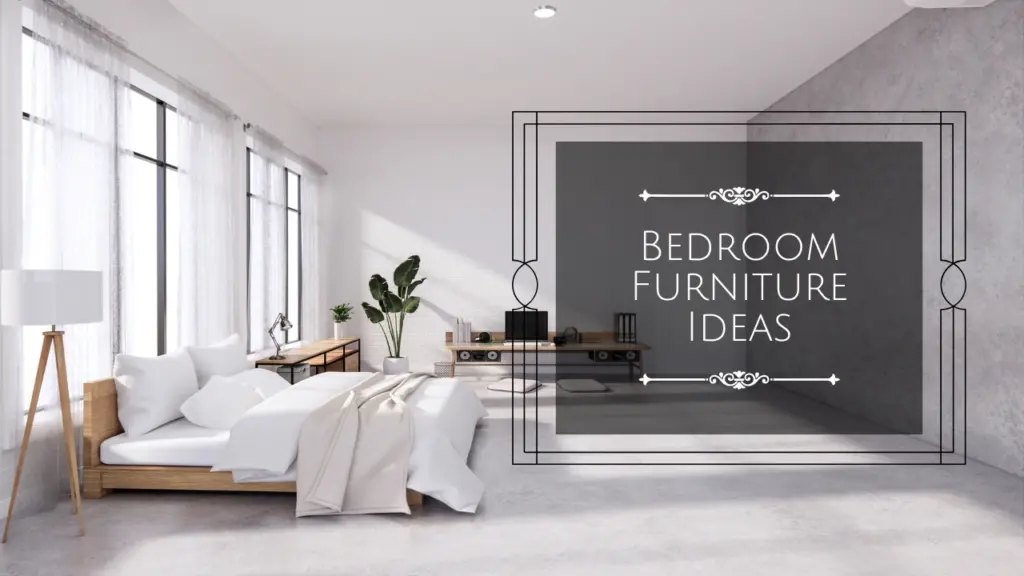The way you arrange your furniture can have a huge impact on the feel and functionality of a room. Whether you’re decorating a small apartment or a spacious home, the right furniture arrangement can make your space look and feel more organized, cozy, and stylish. On the flip side, poor furniture arrangement can leave a room feeling cramped, cluttered, or unwelcoming.
In this article, we’ll explore a variety of practical furniture arrangement tips that can help you transform your living space into a well-organized and aesthetically pleasing room. Whether you’re working with a living room, bedroom, or dining area, these tips will guide you in creating a layout that suits your lifestyle and needs.
Smart Furniture Arrangement Tips for a Stylish and Functional Home
1. Start with a Plan: Measure Your Space
Before you start moving furniture around, take some time to plan out your layout. Measure your room and the pieces of furniture you want to include, so you know what you’re working with. This will help you avoid placing furniture in a way that makes the room feel overcrowded or too empty.
Consider the shape of the room as well. Square rooms offer more flexibility when it comes to arranging furniture, while rectangular rooms might require a more strategic layout to make the most of the space. Use graph paper or an online room planner to sketch out your design before you start moving anything.
2. Create a Focal Point
Every room should have a focal point—a main element that draws attention and sets the tone for the space. In the living room, this could be a fireplace, a large window with a beautiful view, or a statement piece of furniture like a sofa or entertainment center. In a bedroom, the bed often serves as the focal point.
Once you’ve identified the focal point of your room, arrange your furniture around it. For example, in the living room, position your sofa and chairs to face the focal point (whether that’s the TV, a fireplace, or a large piece of art). This creates a balanced and harmonious look and allows people to gather comfortably around the focal point.
3. Keep Traffic Flow in Mind
When arranging furniture, it’s important to consider how people will move through the room. You want to create pathways that allow easy and unobstructed movement. Leave enough space between pieces of furniture so that people can move around without feeling cramped.
For living rooms, aim for at least 2-3 feet of walking space between furniture pieces. In larger rooms, you can create multiple seating areas, but be mindful of keeping clear pathways so the space doesn’t feel cluttered.
READ MORE: Living Room Furniture
4. Balance the Room with Symmetry
Symmetry can create a sense of balance and order in a room. When arranging your furniture, try to mirror elements on opposite sides of the room to create a balanced look. Applying practical Furniture Arrangement Tips, such as placing a sofa and two chairs on one side and using matching lamps or end tables on the other side, can help you achieve harmony in your space.
However, don’t feel like you have to achieve perfect symmetry—just aim for a visually pleasing balance. If your room isn’t symmetrical, use visual cues like colors, shapes, or furniture sizes to create an even distribution of weight throughout the room.
5. Use Furniture to Define Zones
In open-concept spaces or larger rooms, it’s helpful to use furniture to define different zones. This is especially important in multi-functional rooms, like a living room that also serves as a dining area or a home office that doubles as a guest room.
- Living Room: In a large living room, arrange your seating to create distinct conversation areas. For example, you could place a sofa and chairs in one area for watching TV and a smaller set of chairs or a reading nook in another corner for reading or relaxing.
- Dining Room: In a combined living and dining area, position the dining table and chairs in a way that clearly defines the dining zone, while leaving enough space for people to move around.
- Bedroom: In a bedroom, use your furniture layout to create a restful sleeping area, while also considering how to incorporate a seating area, vanity, or workspace if the room is large enough.
6. Consider Proportions and Scale
When arranging furniture, pay attention to the size and scale of the pieces in relation to the room. Following smart Furniture Arrangement Tips ensures that oversized furniture doesn’t overwhelm a small room, while tiny furniture doesn’t look out of place in a larger room.
For example, in a smaller living room, opt for a smaller sofa and chairs to maintain balance and ensure the space doesn’t feel overcrowded. On the other hand, in a large room, you can experiment with larger furniture pieces, like a sectional sofa or oversized coffee table, to create a sense of scale and prevent the space from feeling too empty.
7. Anchor Your Furniture with Rugs
Rugs are an excellent way to define spaces and add warmth and texture to a room. In a living room, use a rug to anchor the seating area by placing it beneath the furniture. Ideally, the rug should be large enough so that at least the front legs of your furniture pieces sit on it. This creates a cohesive look and makes the space feel more grounded.
In a bedroom, you can use a rug to frame the bed and add comfort underfoot. Place the rug just beneath the bed, leaving a few inches of space around the edges to create a balanced look. If the room is large enough, you can also use a rug in the seating area or near the closet to define those zones.
8. Mix and Match Furniture Styles
If you prefer an eclectic or personalized look, don’t be afraid to mix and match different furniture styles. Applying the right Furniture Arrangement Tips can help you combine pieces from various periods or design styles to add character and uniqueness to your space. For example, you could pair a modern sofa with vintage accent chairs or combine a wooden dining table with metal chairs for an industrial touch.
Just make sure the pieces have some elements in common, such as complementary colors, materials, or shapes, so they don’t feel disconnected. This approach can create an interesting and dynamic look while keeping the room cohesive.
9. Add Personal Touches with Accessories
Once your furniture is arranged, it’s time to add personal touches with accessories like throw pillows, artwork, lamps, and plants. These small details can bring your room to life and reflect your personality.
In the living room, add colorful throw pillows to your sofa, or hang a piece of artwork above the fireplace. In the bedroom, a cozy blanket at the foot of the bed, matching bedside lamps, and framed photos on the walls can make the space feel inviting and personal.
10. Experiment and Adjust as Needed
Finally, remember that Furniture Arrangement Tips are not a one-time decision. It’s okay to move things around until you find a layout that feels just right. Don’t be afraid to experiment with different configurations and see what works best for your space. Sometimes, just shifting a piece of furniture a few inches can make a world of difference.
Conclusion: Creating Your Ideal Space
Furniture arrangement is an important aspect of interior design that can enhance both the functionality and aesthetics of a room. By carefully considering your space, creating a focal point, maintaining traffic flow, and using furniture to define different zones, you can transform your home into a well-organized, comfortable, and stylish environment. Keep these furniture arrangement tips in mind as you design your spaces, and remember to have fun with the process—after all, your home should reflect your unique personality and lifestyle.



